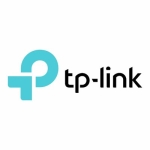Our use cases are mostly in the financial sector.
The classifying of the applications, for example, has been a very useful feature. It helps in contract service, in traffic shaping, and in controlling the balancing between the links that they have over the internet. They have the intention of DI, the direct internet access, as the agencies on the remote side have direct internet access to be able to consume some applications in the cloud.
The product does have a variety of features we can work with.
There's a good balance between 4G and LTE. There are backups to keep the connection going. The MPLS link we had, for example, is just for a backup in case one of the two links goes down.
We have had some problems doing the implementation. We had to open a case with Cisco. The deployment was solved with Cisco's tech help.
In terms of the applications, the policies that we configured didn't work as expected. However, Cisco's tech also helped us deal with this as well.
Meraki has a limitation in the number of links that it can work. For example, in Cisco, we can work with many, many links if you link with Viptela, however, in Meraki, we just get to work with two links or a maximum number of three links including the LAN link. It was a problem. When clients need many links and you have just two links it's a problem.
I've worked with the solution for a while. I've done POCs with five or six different clients.
Technical support is quite helpful in general.
I have worked for the last 15 years, more or less, with Cisco. For the last eight years, I have worked with Cisco and Aruba, especially with Cisco in data center technologies, in SDN technologies like ACI, like SD-Access, or SD-WAN, for example. I have worked in design as well. For example, in the design of data centers, in the designs of WAN networks, LAN networks, and Wi-Fi networks.
I have experience with Cisco Viptela, and Cisco Meraki with the MX series, which I have basically worked with within Cisco Meraki.
In wireless, I have worked in Cisco with the Cisco Ethernet, for example, and in Meraki as well, and I have worked with the MR series in the Cisco in Meraki.
We implemented, for example, Meraki in eight places in a banking environment. We implemented the MX series and we did approach the provisioning that has the solution to develop the implementation in many places. We implemented it in more than 2,000 places - wherever they have services.
We struggled a bit with the implementation, however, we did reach out to Cisco and they were able to help us get back on track.
Cisco technical support did end up helping us with the implementation, however, we mostly did it ourselves.
I work in a company that is a partner of Cisco and we sell the Cisco Meraki SD-WAN solution.
We have implementations both on-premises and in the cloud.
I'd rate the solution a seven out of ten.


















